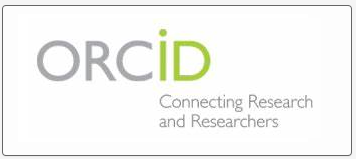Dashnaktsutyun and its anti-human propaganda
DOI:
https://doi.org/10.52340/isj.2022.24.15Abstract
The propaganda of the doctrine of the “infallible” Jesuits, which was brought to the Armenian standard, was reflected in the program of the Dashnaktsutyun party adopted in 1907. The spirit of hatred and chauvinism manifests itself from the very first proposals of this program: the highest goal for them is exclusively to serve the interests of the Armenians. In the 9th paragraph of the document, this idea is manifested most clearly. In order to involve public opinion in the goal, the Dashnaks need to extend their influence to the press. According to an eyewitness, already at the beginning of the century, “now, without exception, all the Caucasian press is in power or under the influence of Armenians”. “Dashnaktsutyun” created a press designed for almost any reader: on a national basis, social status, political, etc. P. For each reader, pro-Armenian ideas and materials were presented in appropriate packaging. In dozens of printed publications, the unshakable authority of the Armenians was affirmed in a direct and veiled form, their invaluable “merits” to the “ungrateful” peoples were extolled, disparaging remarks were made about the “savagery”, “uncivilized” representatives of other nationalities inhabiting Transcaucasia. The nationalist attacks of the pro-Armenian press largely contributed to the artificial incitement of interethnic hatred in the region, sowed the seeds of nationalism, which later turned into bloody seedlings. In order to achieve their goals, the Dashnaks were not averse to reaching an agreement with their opponents. Little is known in Armenia that in 1909, on the initiative of the Armenians, an agreement on cooperation was concluded between the “Young Turks” and the “Dashnaktsutyun”, the first four points of which read: “1. For the implementation of the Constitution and the unshakable strengthening of social development, it is necessary to fight together, sparing no effort for this. 2. In relation to reactionary movements, act jointly, applying the methods stipulated by law. 3. Considering the ultimate goal of the joint activity of the two parties to be the preservation of the integrity of the Ottoman Motherland, they should actually dispel the rumors inherited from the despotic regime that the Armenians are striving for independence. 4. Both parties declare that they are unanimous in “expanding the rights of vilayets” and support the development and progress of the common Ottoman homeland”. The above document once again proves how far the Dashnaks have gone in a double game. They were ready in words, even with weapons in their hands, to defend the "integrity of the Ottoman Motherland", refuted the rumors that "the Armenians are striving for independence." The "expansion of the rights of vilayets" and "broad local autonomy" are mentioned in these documents as if by the way. Cooperating with the dominant and powerful Ottoman party, Dashnaktsutyun again launched its activities in all regions of the empire populated by Armenians. Cornelius Tacitus turned out to be right: “From time immemorial, this people has been unreliable both because of its mental disposition, and because of the position it occupies, being among the most powerful powers, the Armenians for this reason often enter into strife with them, hating the Romans and envying the Parthians. In addition, the tactical maneuver of the Armenians reached its goal in another issue. Thus, the Dashnak leaders Varamyan, Papazyan and the notorious O. Kachaznuni were invited to Istanbul in 1909 as Armenian deputies and took seats in the Turkish parliament. Many Armenian historians subsequently condemned such a short-sighted line of the Dashnaks, who, in the end, "outwitted themselves." For example, “The Dashnaktsutyun Party... made a gross mistake... It began to cling to the Young Turks, concluded an agreement with them, hoping to gain time. However, time, unfortunately, favored neither the Dashnaktsutyun party nor the Armenian people. Time worked for the Young Turks. This important circumstance was not taken into account by the leaders of the Dashnaktsutyun party, they did not take into account that the conditions and tasks of the struggle had changed radically... It was a short-sighted, helpless policy, tantamount to betrayal.” The leaders of the Dashnaks each time fed the Armenian people with illusions, inspiring them with unrealizable hopes about the formation of "Great Armenia" in the near future, and, assuring that "Dashnaktsutyun" in this matter is supported by mighty forces, referring now to Russia, then to England and France . The interests of these powers, undoubtedly, converged on the "Armenian issue", but this interest did not mean at all the readiness to provide real comprehensive and large-scale assistance, without which the plans of the "Dashnaktsutyun" were doomed to failure. All the ideological foundations of the state policy of Armenia, plans of aggression and groundless territorial claims against Turkey, Azerbaijan and Georgia are openly supported by the political movements of this country today. "Ethnic cleansing" was put forward as the first stage of this insidious plan. Armenian leaders openly demanded that the population of Armenia should consist only of Armenians. The territories of Azerbaijan, Georgia and Turkey are an integral part of "Great Armenia". And the historical and cultural monuments, customs, national heritage of these countries are simply obliged to belong to His Majesty the Armenian people. The Georgian writer and thinker I. Chavchavadze wrote about this: “Armenians erase and destroy the traces of Georgians in churches and monasteries belonging to Georgians, scrape off or erase Georgian inscriptions on the stone, remove the stones themselves from the building and replace the inscriptions on them with Armenian ones.So the Dashnaks tried to convince the world that the lands they claimed were clearly Armenian, but the leaders of the Armenian people did not take into account the adequate actions of those peoples who actually owned the indicated territories.
Downloads
References
Римлянам, 5:12
В. А. Величко. «Кавказ. Русское дело и междуплеменные вопросы». СПб., 1904 г.
В. А. Величко. «Кавказ. Русское дело и междуплеменные вопросы». СПб., 1904 г.
М. Варданян. История., т.II. М., 1950 г.
М. Кочар. «Армяно-турецкие политические отношения и армянский вопрос». Ереван, 1988 г.
Война 1877-1878 гг.», т. III, «Война в Азиатской Турции». Под ред. А. Зыкова. СПб.,1881
Ф. Мартенс. Собрание трактатов и конвенций, заключенных Россиею с иностранными государствами, т. XII, СПб., 1898
В. Гурко- Кряжин. «Армянский вопрос». БСЭ., т. III. М.,1926
А. Дарбинян. «Армения в дни национального освобождения. Воспоминания (1890- 1940)». Париж, 1947 г.
Грибоедов А.С. «Письма и 238 Гурам Мархулиа, Шабнам Нуриева записки». Баку. Изд. Маариф,1989 г.
И.Чавчавадзе. Собр. с в X т.,VIII. Тбилиси, 1957 г.
газ. «Мецамор», Ереван, 2004, №6.
С.Айвазян. «История России, армянский след». Москва, 1997 г.
Д.К.Бердзенишвили. «Ахалкалаки». «Артануджи», №7, 1998 г.
Н.Н.Жордания. «Моё прошлое» (Воспоминания), Париж, 1953 г..
ЦГИАГ. Ф. 1864, оп. № 1, д. № 17, л. 9.
Газ. «Борьба», 1918, № 96.
Г.Р.Мархулия. «Из истории возникновения армянской националистической партии «Дашнакцутюн» и ее политике в отношении Грузии в 1918-1920гг.» – «Исторические изыскания», т. II, Тб., 1999, с. 193
Мазниашвили. «Воспоминания. 1917-1925», Тб., 1927 г.
ЦГИАГ, ф. 1864, оп. №1, д. №31, л. 161
И. Шахдин. Дашнакцутюн на службе русской белогвардейщины и английского командования на Кавказе, Тифлис, 1931
«Армянский вопрос на Лозаннской конференции», Тифлис, 1926 г.
В.С.Завриев. «К новейшей истории Северо-Восточных вилайетов Турции», Тб., 1947 г.
О.Качазнуни. «Дашнакцутюн, больше ничего делать». Тифлис, 1927 г.
Г.Р. Мархулия. «Территориальные претензии дашнаков и, т.н., вопрос «раздела Армении» в политических кругах Турции, Грузии и Азербайджана». Кн. «Исторические разыскания». Абхазская организация. Т. VI, Тб., 2003 г.
А.Аставацатрян. «Иттихадско-дашнакские отноше- ния». Жур. «Айреник» («Родина»), Ереван, 1964, № 12.
О.Качазнуни. Дашнакцутюн, больше ничего делать. Тифлис, 1927 г.
ЦГИАГ, ф. 1836, оп. №1, д. №200, л. 9.
ЦГИАГ, ф. 1864, оп. №1, д. №51, л. 26.
ЦГИАА, ф. 37, оп. №1, д. №27, л. 116.
Н. Е. Дарсания. «Была ли неизбежной насильственная советизация Грузии», – «Исторические разыскания», т. I, Тб., 1998 г.
Н.Жордания. «Моё прошлое (Воспоминания»), Париж, 1953 г.)
ЦГИАА, ф. 128, оп. №1, д. №1420, л. 15
ЦГИАА, ф. 128, оп. №1, д. №1420, л. 15-16
С. В. Хармандарян. «Ленин и становление Закавказской Федерации», 1921-1923, Ереван, 1969г.
Доклад И.Джавахишвили правительству Грузии. 1926, ЦГИАГ, ф. 476, оп. №1, д. №6, л. 82-111.
Доклад И.Джавахишвили правительству Грузии. 1926, ЦГИАГ, ф. 476, оп. №1, д. №6, л. 82-111.
Г.Р.Мархулия. «Армянский вопрос» в прошлом и настоящем. «Вестник», Тб., 2007 г.










